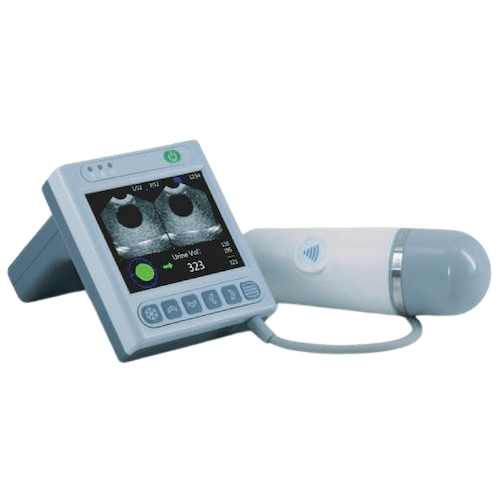Bladder scanners play a critical role in healthcare by providing non-invasive assessments of bladder volume. These devices help clinicians evaluate conditions like urinary retention and reduce unnecessary catheterizations, improving patient outcomes and streamlining care. Choosing the right bladder scanner involves evaluating technical specifications, user needs, and budget constraints. This guide offers practical advice for selecting a device that meets clinical and operational requirements.

What Is a Bladder Scanner?
A bladder scanner is a portable ultrasound device designed to measure bladder volume and detect post-void residual urine. It provides a quick and accurate assessment without the need for invasive procedures. The technology uses sound waves to create images of the bladder, which are then analyzed to estimate the amount of urine present.
The device is widely used in hospitals, clinics, and long-term care facilities for diagnosing bladder dysfunction, managing urinary incontinence, and monitoring conditions such as benign prostatic hyperplasia (BPH).
Key Features to Evaluate
When selecting a bladder scanner, focusing on specific features ensures that the device aligns with clinical needs and operational workflows. Some critical aspects to evaluate include:
Accuracy and Reliability
Accurate measurements are the cornerstone of effective bladder scanning. Devices with advanced algorithms and high-resolution probes deliver more reliable results. Look for scanners with minimal margin of error and validated performance in diverse clinical scenarios.
Ease of Use
User-friendly devices enhance efficiency and reduce training time for healthcare staff. A clear, intuitive interface and ergonomic design allow clinicians to perform scans quickly and comfortably, minimizing disruption during patient care.
Imaging Technology
Modern scanners offer 2D or 3D imaging modes. While 2D imaging suffices for basic bladder assessments, 3D imaging provides enhanced visualization for complex cases. Some models include automated volume calculation, saving time and reducing operator dependency.
Connectivity and Integration
Compatibility with electronic medical records (EMR) systems streamlines documentation and data management. Wireless connectivity and cloud integration options further simplify data sharing across teams.
Portability and Durability
Portable scanners with robust casings withstand frequent use in demanding healthcare environments. Devices designed for easy transport allow clinicians to perform assessments at the bedside or in remote care settings.
Types of Bladder Scanners
Bladder scanners come in three primary categories, each with distinct advantages and considerations.
New Bladder Scanners
New models incorporate the latest technological advancements and typically come with comprehensive warranties and customer support. These devices are ideal for facilities looking to invest in cutting-edge solutions and maximize uptime.
Used and Refurbished Scanners
Pre-owned devices offer significant cost savings while maintaining functionality. Refurbished scanners undergo thorough inspections and upgrades to meet manufacturer standards, providing a reliable alternative for budget-conscious buyers.
Ex-Demo Scanners
Demonstration units, often used briefly for exhibitions or trials, are nearly new and available at reduced prices. These scanners combine modern features with affordability, making them an excellent choice for smaller practices.
Budget and Financing Considerations
Balancing cost and functionality is a critical step in the purchasing process. New scanners often require a higher upfront investment but deliver long-term reliability. Used and ex-demo models offer cost-effective solutions without compromising essential features.
Consider operational expenses like maintenance, calibration, and consumables when setting a budget. Some suppliers offer financing plans or rental options, allowing facilities to access high-quality devices without straining resources.
Reputable Brands and Models
Established manufacturers like Verathon, Vitacon, and LABORIE produce reliable bladder scanners known for their precision and durability. For example, the Verathon BladderScan series features patented algorithms and user-friendly designs. Comparing models based on clinical reviews and real-world performance helps identify the best fit.
Partnering With a Trusted Supplier
The supplier’s role in providing post-purchase support is as critical as the product itself. A reliable vendor offers installation, training, and ongoing maintenance services. They should provide clear warranty terms, service contracts, and replacement options for consumable parts.
Suppliers with expertise in ultrasound technology can guide buyers through the selection process, ensuring the chosen scanner aligns with clinical workflows and budget requirements.
Conclusion
Selecting the right bladder scanner is a strategic decision that impacts patient care and operational efficiency. By evaluating device features, understanding the types of scanners available, and collaborating with reputable suppliers, healthcare facilities can secure a device that meets their specific needs. For expert guidance and a wide range of high-quality bladder scanners, consult ultrasound-scanners.co.uk.
